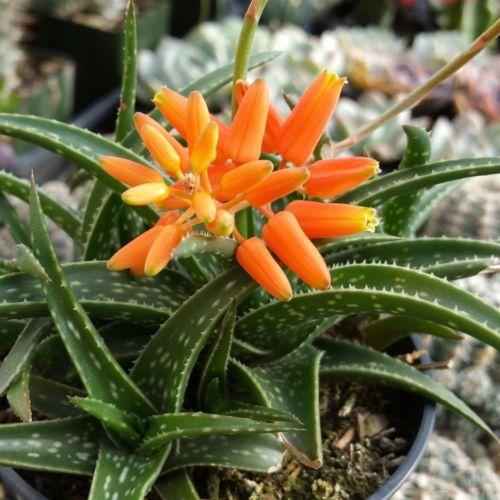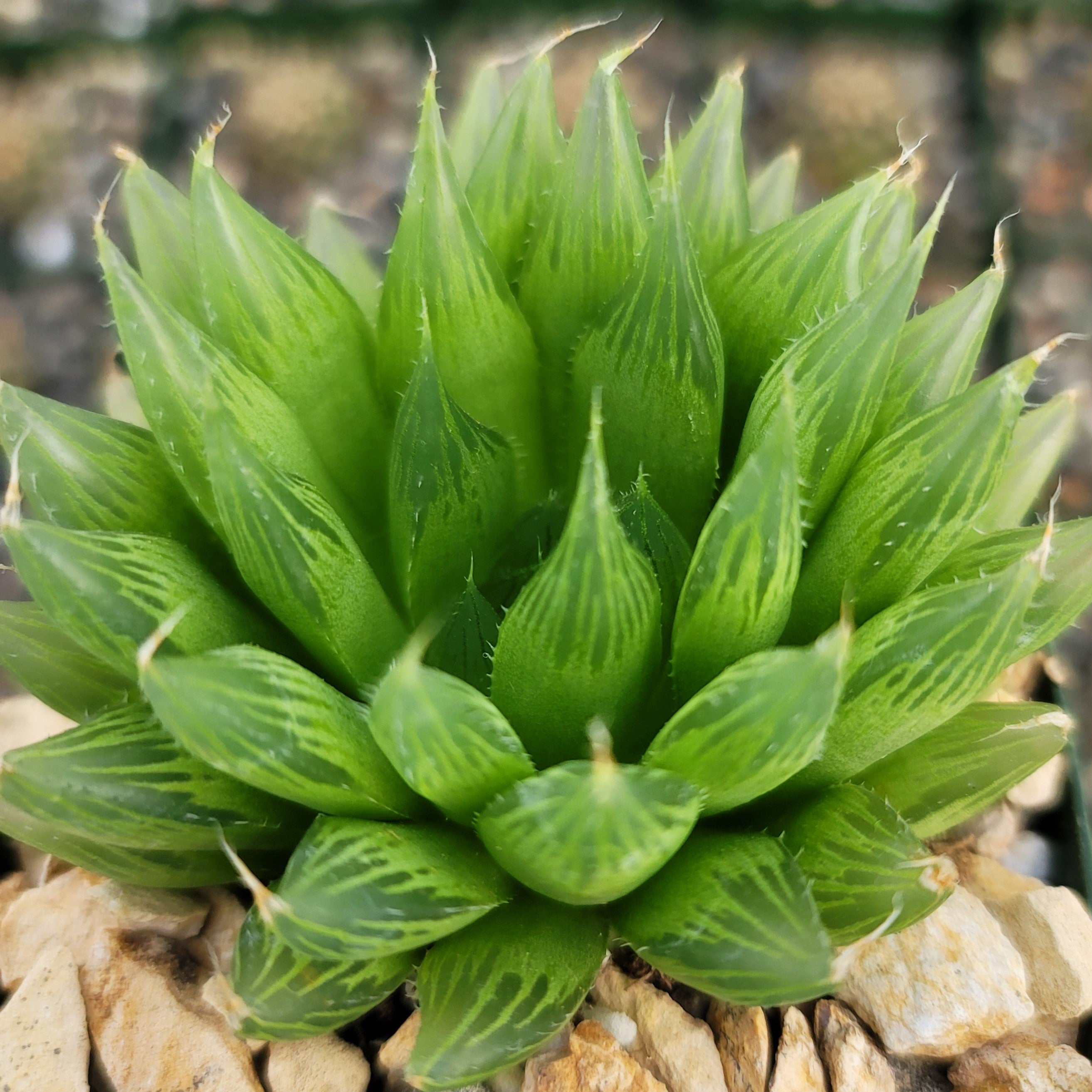10 Best Cactus You Can Grow Indoors Or At Your Home
Updated: January 28, 2025

Members of the Cactaceae family are much adored by gardeners and collectors because of their sizes and types. When these diminutive beings flower, they look even more attractive. To top it off, these living organisms are drought-tolerant, can happily handle low maintenance, and live through poor soil conditions. There are multiple cactus varieties indoors.
The best part is that cacti look good outdoors and indoors. They blend with interior décor of all types. But you need to take care to place them in a spot where they receive a lot of sunlight because that is their inherent nature and requirement.
In this blog, we will talk about the ten best indoor cactus types that are wonderful options to grow indoors.
Different Types of Cacti For Indoor
1. Rickrack Cactus
This tiny ornamental cactus species is an epiphytic variety that grows in the rainforests of Chiapas in Mexico. One unique thing about the cactus Selenicereus anthonyanus is that it blooms at night, and the flower survives just for a day. The stems are leaf-like. You can grow them outdoors as climbers to cover walls or over other plants and trees. Indoors, these look good in hanging pots on the terrace garden, patio, etc. You can buy rick rack cactus for sale at Planet Desert.
|
Botanical Name |
Selenicereus anthonyanus |
|
Native |
Chiapas, Mexico |
|
Growth Rate |
Fast |
|
Common names |
Fishbone cactus, rickrack cactus, zig-zag cactus, and St. Anthony's rickrack |
|
Rick rack cactus flower
|
Dark violet-rose color on the outside and white color inside. Fragrant flowers that bloom late afternoon and close by morning. |
|
Blooming season |
Late spring to early summer |
|
Hardiness |
10a – 11b. Slightly frost-hardy |
|
Propagation |
Stem cuttings |
Rickrack cactus care:
Spring to summer, water the Selenicereus anthonyanus regularly but allow the soil to dry out first. During winters, watering should be minimal. Selenicereus anthonyanus fishbone cactus should be planted in a well-draining potting mix. The light requirement of the cactus is indirect or filtered sunlight. When exposed to direct sun, the plant can be easily damaged.
2. Fairy Castle CactusInterestingly, the Acanthocereus tetragonus fairy castle is characterized by vertically-growing stems of different heights resembling turrets and spires of a castle. It is also an easy-to-grow plant, especially indoors. Fairy castle cactus for sale is now available at Planet Desert.
|
Botanical Name |
Acanthocereus tetragonus |
|
Native |
Mexico |
|
Common names |
Fairy Castle cactus, Fairytale castle cactus, and Green Finger cactus |
|
Fairy castle cactus flower |
Hardly ever flowers but when it does, the flowers are white colored. |
|
Blooming season |
NA |
|
Hardiness |
10a to 11b. Slightly frost-hardy. |
|
Propagating Fairy Castle cactus |
Offsets |
Fairy castle cactus care:
Fairy castle cactus watering should be optimal during the summer season and watering should be minimal. The soil should be dry when watering. The other aspect of Acanthocereus tetragonus care is to bring the plant indoors if the night-time temperatures go below 10°C. Fairy castle cactus light requirement is bright direct sun but ensures shade during the afternoon. For this indoor cactus, it is important to place it near a window receiving warm and bright sunlight.
-
Golden Barrel Cactus
This cactus grows between a height of 24 – 36 inches and is winter-dormant. Buy golden barrel cactus for sale from Planet Desert.
|
Botanical Name |
Echinocactus grusonii |
|
Native |
East-Central Mexico |
|
Golden barrel cactus growth rate |
Slow |
|
Common names |
Barrel Cactus |
|
Golden barrel cactus flower |
Yellow-colored |
|
Blooming season |
Spring to summer |
|
Hardiness |
9a – 11. Slightly frost-hardy. |
|
Propagating golden barrel cactus |
Golden barrel cactus seeds or stem cuttings |
Echinocactus grusonii golden barrel cactus care:
The cactus needs regular watering – once a fortnight – during the summer season. When the season changes and the weather get cold, reduce watering. Echinocactus grusonii habitat involves a well-draining, sandy and gritty soil. Echinocactus grusonii temperature on average during winter should be about 12°C. The cactus needs full sun for the best growth.
-
Saguaro Cactus
The Saguaro Carnegiea gigantea grows about 2 to 4 cm annually in its native region. Consequently, the plant reaches a height of 4 meters in almost a hundred years. These Saguaro cactus flowers bloom at night and close in the morning. When cultivated, the Saguaro cactus has a faster growth rate. Get carnegiea gigantea for sale from Planet Desert!
|
Botanical Name |
Carnegiea gigantea |
|
Native |
Mexico, Arizona & California |
|
Growth Rate |
Slow |
|
Common names |
Saguaro Cactus |
|
Saguaro Flower |
White flowers with yellow centers |
|
Blooming season |
Spring |
|
Hardiness |
Not frost-hardy. |
|
Propagation |
Stem cuttings |
Care for Carnegiea gigantea saguaro cactus:
The Saguaro cactus should be watered routinely during the hot season. The soil should be dry before being watered. The soil should drain off well. The cactus requires full sun when fully-grown but filtered light when young.
An interesting fact about the Saguaro cactus blossom is that it blooms for less than 24 hours.
-
Christmas Cactus
It is an unusual cactus with flattened stems without any leaves. The dark-green stems split up into various leaf-like structures and grow in a cascading manner. It is an epiphytic cactus clinging onto rocks and trees in the jungle. There are three Christmas cactus varieties- Schlumbergera truncata, Schumbelgera bridgesii, and Rhipsalidopsis gaertnerii.
Buy the Schlumbergera bridgesii for sale from Planet Desert.
|
Botanical Name |
Schlumbergera bridgesii |
|
Native |
Coastal mountains of southeast Brazil |
|
Common names |
Christmas Cactus |
|
Flower |
Perfect Symmetrical. Purple-red petals with a pinkish-purple center. |
|
Blooming season |
Winter |
|
Hardiness |
9 a – 11b. Slightly frost-hardy. |
|
Propagation |
Stem cuttings |
Caring for Schlumbergera bridgesii christmas cactus:
The soil for this cactus should be coarse and sandy. Interestingly, propagating Christmas cactus in water is a possibility. Ensure that soil is never water-logged to get large Christmas cactus. Sometimes, be prepared for Christmas cactus white flowers in December.
-
Star Cactus
All Astrophytum types have a solitary non-branched flat-barrel stem without any spines. In their native habitat, the stems are flat while when cultivated the stems grow as columnar or spherical. The asterias flower survives only for one or two days.
Order for Astrophytum asterias for sale from Planet Desert.
|
Botanical Name |
Astrophytum asterias |
|
Native |
Texas & Mexico |
|
Growth Rate |
Slow |
|
Common names |
Sand Dollar Cactus, Star Cactus, Sea Urchin Cactus, Star Peyote |
|
Astrophytum asterias Flower |
Yellow-colored star cactus flower with orange or red inside. |
|
Blooming season |
Spring |
|
Hardiness |
9a - 11 |
|
Propagation |
Astrophytum asterias seeds |
Astrophytum asterias care:
The star-shaped cactus requires direct sunlight for at least six hours a day, if outside, and four hours daily if the cactus is inside the house. The soil should be porous and sandy. For indoor cactus plants, ensure that the potting mix contains gravel, pebbles, and perlite. Use the ‘soak and dry’ method to help the cactus grow at its best.
-
Feather Cactus
Cactus Mammillaria plumosa is globose-shaped and serves as an ornamental plant, especially indoors. The dense growth of white spines on the plumosa cactus gives it an enhanced look. It is also quite soft to the touch and therefore, kid-safe.
Click here to buy the Mammillaria plumosa for sale.
|
Botanical Name |
Mammillaria plumosa |
|
Native |
Mexico |
|
Growth Rate |
Slow |
|
Common names |
Feather Cactus |
|
Mammillaria plumosa Flower |
Whitish-yellow-colored flowers |
|
Blooming season |
Mid-spring |
|
Hardiness |
9a - 11 |
|
Propagation |
Seeds |
Caring for Mammillaria plumosa feather cactus:
Water the plant once a week. It can be fertilized during the hot season. The soil should be typical of a cactus plant’s requirement. The feather cactus should be placed near a window where it receives full sun for at least four hours a day.
-
Old Lady Cactus
Cactus Mammillaria hahniana has characteristic white hairs, typical of an old lady. The circle-like crown makes the Mammillaria hahniana one of the best indoor cactus choices.
The old lady cactus for sale is available at Planet Desert.
|
Botanical Name |
Mammillaria hahniana |
|
Native |
Mexico |
|
Growth Rate |
Mammillaria hahniana old lady cactus has a slow growth rate |
|
Common names |
Old Lady cactus |
|
Old Lady Cactus Flower |
Vivid magenta flower |
|
Blooming season |
Old Lady cactus bloom appears late winter to early spring |
|
Hardiness |
9 b – 11. Slightly frost-hardy |
|
Propagation |
Seeds |
Old lady cactus care:
Mammillaria old lady cactus needs light shade for optimal growth. Mammillaria hahniana cactus should be watered sparingly. The soil should drain off well.
-
Bunny Ears Cactus
The bunny ears succulent comes with flattened pads, smaller in size varying between oval to round shape. Get the bunny ear cactus for sale from Planet Desert.
|
Botanical Name |
Opuntia microdasys |
|
Native |
Mexico |
|
Bunny ear cactus growth rate |
Slow |
|
Common names |
Bunny Ears and Angel's Wings |
|
Opuntia microdasys Flower |
Wide-creamy yellow bunny ear cactus flower |
|
Blooming season |
Summer |
|
Hardiness |
9a – 11b. It is slightly-frost hardy |
|
Propagating bunny ear cactus |
Bunny cactus cuttings |
Bunny ear cactus care:
Bunny ear cactus watering schedule should be once in two weeks when the soil is completely dry. Bunny ear cactus sunlight requirement is direct sunlight. All opuntia microdasys varieties need at least six to eight hours of daily direct sunlight. Opuntia bunny ears should be planted in a potting mix that drains off well. Mix sand, perlite, or pumice to standard potting mix for its indoor care.
-
Blue Columnar Cactus
The Pilosocereus pachycladus appears as a mini-Saguaro cactus. The Cactaceae pilosocereus pachycladus exhibits columnar growth. The trunk of the cactus is crowded with innumerable bluish-silver branches.
Buy Pilosocereus pachycladus for sale from Planet Desert.
|
Botanical Name |
Pilosocereus pachycladus |
|
Native |
Brazil |
|
Pilosocereus pachycladus Growth Rate |
fast |
|
Common names |
Blue Columnar Cactus |
|
Blue Columnar Cactus Flower |
Funnel-shaped whitish to greenish |
|
Blooming season |
Summer |
|
Hardiness |
9 - 11 |
|
Propagation |
Cuttings |
Pilosocereus pachycladus care:
Weekly watering is good for Pilosocereus pachycladus. 10-12 hours of sunlight is required by the cactus for growth. Blue columnar cactus indoor care involves placing it near the window with direct sunlight. Use a potting mix containing sand, perlite, and limestone for the best growth of the blue columnar cactus indoors.

























